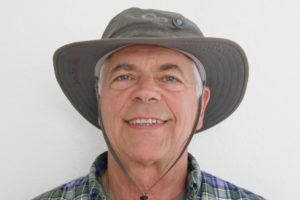Welcome back to a monthly column focused on local day hiking destinations, that with a little imagination, will take you back in time to when our local Native Americans lived in a garden of Eden we now call home. For more hiking ideas, go to www.eastbayhillpeople.com and read the “Travelogue Blog” tab.
Today’s story may or may not be true.
It’s the story of four hikers: A Simple House Painter, a Debunker, a Geologist and a Storyteller. All of them trying to go back in time, roaming the hills in the hope of discovering Native American villages. They would use old maps like the Nelson map discussed last month, EIR (environmental impact report) documents and common sense when looking for potential sites. There had to be more.
Hiking the hills and valleys was great fun for our adventures, but the team also enjoyed the investigation of the cultural history associated with native sites, along with the geology and environment that provided resources, not to mention the wildlife, and photo opportunities commonly seen on their travels. The hikers kept thinking about undiscovered sites that needed protection.
There were reports of a “coc” finding mortars years ago in the area of a big rock still visible from the road just off the freeway in Benicia. The hikers were persistent.* “There it is,” said the Simple House Painter through the wind. The freeway was noisy behind us. The engine had stopped.
When we stepped onto solid ground, and into the open air, our hats almost blew off. The monolith rock was still there, just up the canyon, as it had always been.
Looking around, we don’t see any “no trespassing” signs, so the way is clear. We leave a note that the engine had stopped, and jump the fence. So close, so near.
“We proceeded on,” to paraphrase Lewis and Clark, to a creek still full of water on this windy summer day. Our guide was a male red tailed hawk that was tutoring his two clumsy kids on the finer points of flying in high velocity winds, as Mom kept a watchful eye.
The short hike took us to a large rock barely visible from the freeway, and the reported location of mortars, a sure sign of a village site. “Dang, where are they?”
The hard wind was no longer a factor. We were in a calm oasis. A water source was just a few steps away. Turkey feathers drifted in the calm breeze, a coyote trotted by. “We are here.”
Up ahead we found the beautiful mortars on a unique rock that had curious veins running through it. “Indurated (hard rock) veins” said the geologist. Doc was right.
Just across the creek, the cow trail turned suddenly from a gray/chalk color to dark brown, close to a dark loam.* “This could be a midden,” said the Debunker.
With a fresh eye, we could clearly see the midden. It was an area around 50 x 50 feet of dark soil that the cow trail went straight through. But what really set it apart was how the trail sparkled in the sun. A closer look answered our question, sea shells, the largest about the size of a small corn flake and the smallest like a grain of sand. The cows had pulverized the shells as they walked along trail. Something black and shiny caught the Debunker’s eye. It was an obsidian flake left over from the making of arrowheads. * “Here is another one, and another one,” said the one telling the story. * “Look at this,” said the Simple House Painter.
I won’t report what he may have found, I will only say that an object could have been discovered that sealed our belief that we were in a major village of the Patwin Suisunes that had until now, been undiscovered.
If you squint your eyes a bit, the village comes alive. Wikiups, babies crying, people singing and chatting while pounding grains. Wood smoke, and the sent of food being cooked drifted in the air. How many years had they lived here? The midden was large and deep, so perhaps these Patwin had lived here for a very long time.
That day a new site was discovered and a puzzle was solved. The past had suddenly come alive, and we left the village in silence and with a sense of reverence.
Walking back to the car, the winds had become even stronger and the freeway seemed noisier. We were back in our modern, busy world again. The engine started running, and the four hikers “proceeded on.”
Seize the day.
Please feel free to email me if you would like some photos or have questions.
Richard DeGraffenreid and his wife Anne are 34-year residents of Benicia. He is also a drummer/songwriter, photographer, cook, dad and grandpa.He can be reached at richarddegraffenreid@comcast.net.







Leave a Reply